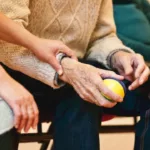
Uncovering the Hidden Dangers of Ultraviolet Radiation: How UV Exposure Can Lead to Skin Cancer
Ultraviolet (UV) radiation is a type of electromagnetic radiation that falls within the range of wavelengths between 10 and 400 nanometers. It is a form of energy that is emitted by the sun and can also be produced by man-made sources such as tanning beds and certain types of light bulbs.
The sun is the primary source of UV radiation, and it is divided into three main types: UVA, UVB, and UVC. UVA radiation has the longest wavelength and is responsible for tanning the skin. UVB radiation has a shorter wavelength and is responsible for sunburns and skin damage. UVC radiation has the shortest wavelength and is mostly absorbed by the ozone layer, making it less of a concern for human health.
Exposure to UV radiation can have both positive and negative effects on human health. On one hand, it is necessary for the production of vitamin D in the body, which is essential for bone health. On the other hand, excessive exposure to UV radiation can lead to skin cancer, cataracts, and other eye problems, as well as suppress the immune system.
To protect yourself from the negative effects of UV radiation, it is important to use sunscreen with a sun protection factor (SPF) of at least 30 when spending time outdoors, especially during the peak hours of sun exposure between 10 am and 4 pm. Wearing protective clothing, such as long-sleeved shirts and wide-brimmed hats, and staying in the shade can also help reduce your exposure to UV radiation.
It is also important to be aware of the UV index, which is a measure of the intensity of UV radiation. The UV index ranges from 0 to 11, with higher numbers indicating a greater risk of skin damage. When the UV index is 3 or higher, it is recommended to take precautions to protect yourself from UV radiation.
In addition to protecting yourself from the harmful effects of UV radiation, it is also important to be aware of the potential risks associated with man-made sources of UV radiation. Tanning beds, for example, emit UVA radiation and can increase the risk of skin cancer. It is important to use caution when using such devices and to follow the manufacturer's instructions for safe use.
In conclusion, ultraviolet radiation is a form of electromagnetic energy that is emitted by the sun and can also be produced by man-made sources. While it is necessary for the production of vitamin D, excessive exposure to UV radiation can lead to skin cancer, cataracts, and other health problems. To protect yourself from the negative effects of UV radiation, it is important to use sunscreen, wear protective clothing, and be aware of the UV index. Additionally, it is important to be aware of the potential risks associated with man-made sources of UV radiation and use caution when using such devices.
Excessive exposure to ultraviolet (UV) radiation can lead to the development of skin cancer. UV radiation can damage the DNA in skin cells, leading to mutations that can eventually cause cells to grow and divide uncontrollably, forming a cancerous tumor.
UVA radiation is primarily responsible for tanning the skin, but it can also penetrate deeper into the skin and contribute to the development of skin cancer. UVB radiation is primarily responsible for sunburns and can also damage the DNA in skin cells, leading to mutations that can eventually cause skin cancer.
UV radiation can also suppress the immune system, making it harder for the body to detect and destroy abnormal cells that have the potential to become cancerous. This can increase the risk of skin cancer.
People with lighter skin, hair, and eyes are at a higher risk of developing skin cancer because they have less melanin, the pigment that provides some protection against UV radiation. People who have had a lot of sun exposure, have had sunburns, or have a family history of skin cancer are also at a higher risk of developing the disease.
It's important to protect your skin from UV radiation by using sunscreen with a sun protection factor (SPF) of at least 30, wearing protective clothing, and staying in the shade during peak hours of sun exposure between 10 am and 4 pm. Also, avoid tanning beds as they emit UVA radiation and can increase the risk of skin cancer.
It's also important to have your skin checked by a healthcare provider on a regular basis, especially if you notice any changes in the appearance of your skin, such as a new mole, a change in the color, size, or shape of a mole, or a sore that doesn't heal. Early detection is key to effectively treating skin cancer.
There are several steps that can be taken to minimize the risk of skin cancer from ultraviolet (UV) radiation:
- Use sunscreen: Apply a sunscreen with a sun protection factor (SPF) of at least 30 to all exposed skin before going outdoors. Be sure to reapply every 2 hours, or immediately after swimming or sweating.
- Wear protective clothing: Cover up with long-sleeved shirts, pants, and wide-brimmed hats to protect your skin from UV radiation.
- Seek shade: Stay in the shade during peak hours of sun exposure between 10 am and 4 pm, when UV radiation is the strongest.
- Avoid tanning beds: Tanning beds emit UVA radiation, which can increase the risk of skin cancer.
- Check your skin regularly: Look for any changes in the appearance of your skin, such as new moles, changes in the color, size, or shape of moles, or sores that don't heal.
- Get regular skin check-ups: Have your skin checked by a healthcare provider on a regular basis, especially if you have a family history of skin cancer or have had a lot of sun exposure.
- Be aware of the UV index: The UV index is a measure of the intensity of UV radiation, with higher numbers indicating a greater risk of skin damage. When the UV index is 3 or higher, it is recommended to take precautions to protect yourself from UV radiation.
By following these steps, you can greatly reduce your risk of skin cancer and protect your skin from the damaging effects of UV radiation. Remember, early detection is key to effectively treating skin cancer, so be sure to take good care of your skin and see a healthcare provider if you notice any changes.



